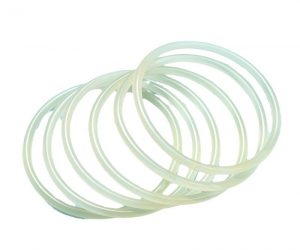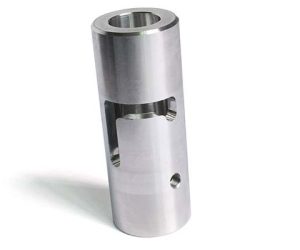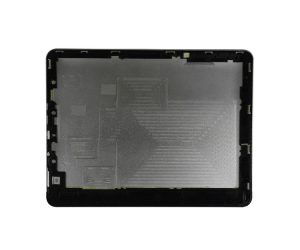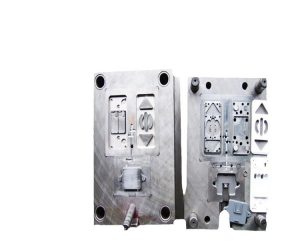The intricate choreography of plastic injection molding hinges critically on mold assembly, a process demanding precision and a deep understanding of component interaction. This treatise delves into the multifaceted aspects of mold construction, moving beyond simplistic descriptions to explore the nuanced interplay of forces and materials.
Core and Cavity: The Geometrical Heart: The core and cavity are not merely shaping elements; they are the very definition of the part's geometry, their tolerances dictating the dimensional accuracy and surface finish of the final product. Imperfect mating surfaces lead to not only dimensional inaccuracies but also stress concentrations, potentially resulting in premature mold failure and compromised part integrity. The selection of materials, their thermal properties, and the precision of their machining are paramount.
Ejection System: A Controlled Release: The ejection system transcends simple expulsion; it's a carefully orchestrated sequence of forces designed to release the molded part without damage. The design must account for part geometry, material properties (including shrinkage and warpage), and the potential for residual stresses. Failure to account for these factors can result in part breakage, ejection marks, or the catastrophic failure of the ejection mechanism itself.
Cooling System: Thermodynamic Precision: The cooling system is far more than a passive heat sink; it's a dynamic control system influencing cycle times, part quality, and even the residual stresses within the molded part. The design requires sophisticated thermal modeling to ensure uniform cooling, preventing warping and internal stresses. The selection of coolant, flow rates, and channel geometry are all critical parameters impacting efficiency and part quality.
Sprue and Runner System: Fluid Dynamics in Miniature: The sprue and runner system is a microcosm of fluid dynamics, demanding precise control over melt flow to ensure complete cavity filling and minimize pressure drops. The design must account for viscosity changes with temperature, melt flow index, and gate geometry to prevent short shots, weld lines, and air entrapment.
Support Structures: The Unsung Heroes: Support plates and backing plates are not merely structural elements; they are the foundation upon which the entire mold's stability rests. Their precision machining ensures alignment, preventing leaks and maintaining the integrity of the mold under the extreme pressures and temperatures of the injection process. Deficiencies here can lead to catastrophic mold failure.
Guiding and Alignment: A Dance of Precision: Guiding components and alignment locks are not optional extras; they are the guardians of dimensional accuracy and mold longevity. The precision of these components directly impacts the consistency of the molded parts, preventing flash, reducing wear, and ensuring the long-term reliability of the mold.
Fluid Management: The Water Manifold and Venting: The water manifold is the circulatory system of the mold, ensuring uniform cooling. The venting system, equally critical, manages the expulsion of trapped air and gases, preventing defects that compromise part integrity and potentially lead to mold damage. Both systems require meticulous design and careful consideration of flow dynamics.
Sealing: The Impermeable Barrier: O-rings and seals are the sentinels against leaks, maintaining the necessary pressure for proper part formation. The selection of materials and their proper installation are crucial, as leaks can compromise the molding process and lead to costly downtime.
Fasteners: The Bonds of Strength: Fasteners are not simply connecting elements; they are the structural backbone of the mold assembly. The choice of fastener material, type, and torque specifications are critical to ensuring the mold's structural integrity and resistance to the stresses of the injection process. Improper fastening can lead to leaks, misalignment, and catastrophic failure.
This detailed examination underscores the complexity of mold assembly, highlighting the critical interplay of various components and the profound impact of design choices on the efficiency, reliability, and quality of the plastic injection molding process. Ignoring these nuances can result in significant financial losses and compromised product quality.
The Imperative of Precision in Mold Assembly: A Manufacturer's Conundrum
The creation of a high-performance injection mold transcends mere assembly; it demands a nuanced understanding of material science, precision engineering, and the intricate dance between design and manufacturing. Failure at any stage precipitates cascading consequences, jeopardizing production timelines, compromising product quality, and ultimately, eroding profitability. This is not a suggestion; it is a mandate.
Precision Machining: Beyond Tolerances. The pursuit of micron-level accuracy in mold assembly components is not an optional luxury but a fundamental requirement. Minute deviations from specified dimensions propagate exponentially, resulting in misalignments, compromised clamping forces, and ultimately, catastrophic part ejection failures. Advanced metrology techniques, coupled with rigorous statistical process control (SPC), are not merely recommended – they are indispensable.
Material Selection: A Symphony of Properties. The selection of materials for mold components is not a simple matter of choosing the cheapest option. Rather, it demands a sophisticated analysis of thermal conductivity, wear resistance, corrosion resistance, and coefficient of thermal expansion (CTE) – properties that interact in complex and often unpredictable ways under the extreme pressures and temperatures of injection molding. The failure to account for these synergistic effects can lead to premature component failure, requiring costly and time-consuming repairs.
Modular Design: Agility in the Face of Uncertainty. A rigid, monolithic mold design is an anachronism in today's dynamic manufacturing environment. The adoption of modular design principles, allowing for rapid component replacement and reconfiguration, is not simply desirable; it's a competitive necessity. This necessitates a paradigm shift towards standardized interfaces and robust, easily replaceable sub-assemblies, enabling swift adaptation to evolving product demands and minimizing production downtime.
Quality Control: Proactive, Not Reactive. Quality control in mold assembly is not a post-production afterthought; it's an integral, iterative process woven into every stage of production. The implementation of robust quality assurance protocols, encompassing dimensional inspection, material testing, and non-destructive evaluation (NDE) techniques, is paramount. A proactive approach, identifying and rectifying potential issues before they escalate into full-blown production crises, is the only acceptable strategy.
Collaboration: A Fusion of Expertise. The successful execution of a complex mold assembly project necessitates a seamless integration of expertise across diverse disciplines. The siloed approach is antithetical to optimal performance. Effective collaboration between mold designers, materials engineers, process engineers, and assembly technicians, fostered through open communication and shared responsibility, is not merely beneficial – it's absolutely crucial for achieving superior results.
The creation of a high-performance injection mold is a complex undertaking, fraught with potential pitfalls. By adhering to these principles, manufacturers can navigate these challenges, ensuring the consistent production of high-quality plastic parts and achieving a decisive competitive advantage. Anything less is simply unacceptable.
The intricate dance of high-precision manufacturing hinges on a seemingly unassuming element: the mold assembly. For the plastics manufacturer, these components are not mere parts; they are the architects of form, the silent guarantors of consistent output, and the often-overlooked key to profitability. This isn't a simple discussion of nuts and bolts; it's a deep dive into the critical interplay of material science, engineering precision, and cost-effective optimization within the demanding realm of plastic injection molding.
Let's dissect the fundamental building blocks: the core, cavity, runner, gate, ejector system, and cooling channels—each a critical node in a complex, interdependent network. Their precise interaction dictates the final product's fidelity, and any deviation ripples outwards, impacting production efficiency, material waste, and ultimately, the bottom line. The seemingly insignificant micron-level imperfection can escalate into a catastrophic cascade of rejects, leading to crippling production downtime and financial hemorrhage.
The selection of mold assembly components transcends mere catalog browsing. It demands a nuanced understanding of material properties—the fatigue resistance of hardened steel versus the cost-effectiveness of aluminum alloys, the thermal conductivity crucial for efficient cooling cycles, and the susceptibility of various materials to chemical degradation under specific operating conditions. This decision-making process requires a sophisticated interplay of engineering principles, cost analysis, and a predictive model accounting for long-term operational stresses.
Beyond material science, the geometric precision of these components is paramount. Micrometer tolerances are not mere suggestions; they are non-negotiable imperatives. Minute deviations from the CAD model translate directly into dimensional inaccuracies in the finished product, jeopardizing functionality and potentially leading to costly recalls. Advanced manufacturing techniques such as CNC machining, EDM, and laser sintering are not optional luxuries; they are essential tools for achieving the necessary levels of precision.
Maintenance is not a periodic afterthought; it's a continuous, proactive strategy. Regular inspection, employing advanced diagnostic techniques, is crucial to identify incipient failures before they escalate into costly downtime. Predictive maintenance models, leveraging data analytics and machine learning, can optimize maintenance schedules, minimizing interruptions while maximizing the lifespan of the mold assembly. Ignoring this aspect invites premature component failure, leading to cascading production losses and substantial repair costs.
Optimizing mold assembly performance requires a holistic approach. This transcends simple component selection; it necessitates a thorough reassessment of the entire molding process. Design for manufacturability (DFM) principles must be rigorously applied, streamlining the assembly process, minimizing the number of components, and simplifying the overall design to reduce complexity and improve efficiency. Investing in employee training programs focused on advanced troubleshooting and preventative maintenance is not an expense; it's a strategic investment in long-term operational success.
In conclusion, the mold assembly is not simply a collection of parts; it's the heart of the plastics manufacturing process. Its performance dictates the quality, efficiency, and profitability of the entire operation. A deep understanding of material science, precision engineering, proactive maintenance, and continuous improvement is not optional; it's the key to unlocking the full potential of your manufacturing capabilities and achieving sustained competitive advantage in the fiercely competitive landscape of the plastics industry.
What are mould assembly parts and why do you need them?
Mould assembly parts are the components that make up the moulds that shape your plastic products. They are usually made of steel or aluminium and have various shapes and sizes depending on the product design and specifications.
Mould assembly parts are essential for your production process because they determine the quality, accuracy and efficiency of your plastic products. They affect the following aspects of your production:
- Product appearance: The surface finish, colour, texture and shape of your product depend on the quality and precision of your mould assembly parts. If your mould assembly parts are worn out, damaged or misaligned, they can cause defects such as flash, sink marks, warping, bubbles and more.
- Product functionality: The performance, durability and reliability of your product depend on the functionality and compatibility of your mould assembly parts. If your mould assembly parts are not designed or selected properly for your product specifications, they can cause problems such as dimensional inaccuracies, poor fitment, leakage, breakage and more.
- Production efficiency: The speed, productivity and profitability of your production depend on the efficiency and stability of your mould assembly parts. If your mould assembly parts are not maintained or optimized properly for your production conditions, they can cause issues such as slow cycle times, high scrap rates, frequent downtime and more.
Therefore, it is crucial to have high-quality mould assembly parts that suit your product design and specifications, as well as to keep them in good condition and optimize them for your production process.
How to choose the right mould assembly parts for your product design and specifications?
The seemingly straightforward selection of mold assembly components for a given product design masks a labyrinthine complexity, a Gordian knot of interdependent variables demanding a level of precision bordering on the arcane. The seemingly simple act of choosing the correct parts transcends mere material science and geometry; it delves into the unpredictable realm of material behavior under duress, the subtle dance between thermal gradients and pressure differentials, and the often-unforeseen consequences of microscopic surface irregularities.
Consider, for instance, the capricious nature of thermoplastic polymers. The seemingly innocuous choice of polyethylene terephthalate (PET) versus polycarbonate (PC) introduces a cascade of implications: the PET's susceptibility to hydrolysis under specific conditions, the PC's propensity for stress cracking, and the vastly differing melting points demanding radically different thermal management within the mold. This extends beyond the mere melting point; the viscosity profile throughout the molding cycle, the inherent shrinkage and warpage tendencies, and the potential for degradation under prolonged exposure to elevated temperatures all demand meticulous consideration. Furthermore, the product's geometry introduces a further layer of intricacy. Subtle variations in wall thickness, the presence of undercuts or complex internal features, and the required surface finish – all conspire to dictate the selection of specific mold components, each with its own tolerance range, wear characteristics, and susceptibility to thermal shock.
The desired product tolerance, a seemingly quantifiable parameter, introduces a dimension of ambiguity. The specification of ±0.1mm, for example, might appear straightforward, yet it necessitates a cascade of considerations: the precision of the machining process, the potential for thermal expansion and contraction within the mold, and the inherent variability of the molding process itself. The interplay between these factors dictates the selection of components capable of consistently achieving, or exceeding, the specified tolerances, while simultaneously optimizing the overall production efficiency.
Production volume introduces a further layer of complexity. The seemingly simple decision between a single-cavity and multi-cavity mold is fraught with implications for cycle time, tooling costs, and the long-term viability of the production process. The selection of components must account for the cumulative wear and tear under high-volume production, necessitating materials with exceptional durability and resistance to fatigue. The choice between hot runner and cold runner systems, for example, introduces further complexities, impacting energy consumption, material waste, and the overall cost-effectiveness of the operation.
Ultimately, the selection of mold assembly components requires more than mere technical expertise; it demands a profound understanding of the interplay between material science, thermodynamics, fluid dynamics, and the inherent uncertainties of high-precision manufacturing. The consultation with a seasoned mold maker, therefore, is not merely advisable; it is absolutely indispensable. Their expertise extends beyond the mere selection of components; it encompasses the holistic design of the molding process itself, anticipating and mitigating potential pitfalls before they manifest in flawed products or costly production delays. The true mastery lies not in the selection of individual parts, but in the orchestration of a complex system, where each component plays its crucial role in the creation of a perfect whole.
Mould Assembly Parts: A Comprehensive Guide for Manufacturers
Mould assembly parts are essential components of any moulding process, whether it is injection moulding, blow moulding, or thermoforming. They are responsible for shaping, cooling, and ejecting the final product from the mould cavity. However, mould assembly parts also face various challenges such as wear and tear, corrosion, contamination, and thermal stress. Therefore, it is important for manufacturers to maintain their mould assembly parts properly and improve their performance to reduce costs and increase efficiency.
How to maintain your mould assembly parts and extend their lifespan?
Mould maintenance transcends mere cleanliness; it's a multifaceted discipline demanding rigorous adherence to protocols that mitigate degradation and ensure operational longevity. The seemingly simple act of cleaning becomes a critical vector in preventing performance decay. Routine removal of particulate contaminants – dust, grease, and process residues – is paramount. While manual intervention with brushes, specialized wipes, or even compressed air remains viable for certain applications, the deployment of automated systems, such as ultrasonic cleaners, high-pressure spray washers, or the more aggressive dry ice blasting, offers superior efficacy, particularly in complex mould geometries. Pre-storage cleaning is not merely advisable; it's a crucial preventative measure against the insidious onset of rust and corrosion.
Lubrication, far from being a secondary concern, constitutes a critical bulwark against the relentless forces of friction and wear. The judicious application of lubricants – ranging from conventional oils and greases to advanced dry film formulations – is dictated by the specific material properties and operational demands of each mould component. The timing of lubrication is equally crucial; post-cleaning application provides a protective barrier against moisture ingress and the subsequent oxidative processes that compromise structural integrity. The choice of lubricant must be meticulously considered, accounting for factors such as operating temperature, chemical compatibility, and the potential for lubricant migration into the moulded product.
Finally, inspection transcends mere visual observation; it demands a multi-modal approach capable of detecting subtle anomalies indicative of impending failure. While visual inspection, employing magnifiers, microscopes, or high-resolution imaging systems, remains essential, instrumental techniques utilizing precision gauges, sophisticated metrology equipment, and advanced sensor arrays are indispensable for the early detection of micro-cracks, dimensional deviations, and other insidious forms of degradation. Post-production cycle inspection is not optional; it's a mandatory procedure for identifying defects and deviations from stringent specifications, preventing the propagation of flawed products and ensuring the maintenance of quality control standards. Failure to adhere to these rigorous protocols risks catastrophic mould failure, resulting in significant production downtime and substantial financial losses.
How to improve your mould assembly performance and reduce your costs?
Optimizing mold assembly necessitates a multifaceted approach transcending simplistic solutions. Merely selecting appropriate materials or implementing rudimentary maintenance schedules proves insufficient. A paradigm shift towards predictive, rather than reactive, strategies is crucial for achieving significant performance gains and substantial cost reductions.
The initial, and arguably most impactful, vector for improvement lies in the sophisticated application of computer-aided design (CAD) and finite element analysis (FEA). This transcends basic 3D modeling; it demands the integration of advanced simulation techniques capable of predicting complex, non-linear behaviors under dynamic operating conditions. Such analyses must account for not only stress concentrations and potential failure modes (deformation, cracking, leakage), but also for the intricate interplay of thermal gradients, pressure fluctuations, and material fatigue. The resulting data informs design iterations that proactively mitigate unforeseen vulnerabilities, minimizing costly downstream rework and unforeseen downtime.
Material selection, far from being a straightforward process, requires a nuanced understanding of material science and its intersection with manufacturing constraints. The choice transcends mere consideration of cost and readily available materials. Factors such as coefficient of thermal expansion mismatch between components, microstructural characteristics influencing wear resistance, and the susceptibility to specific chemical degradation must be meticulously evaluated. Advanced materials, such as high-performance polymers, specialized alloys, or even composites tailored to specific application parameters, may offer substantial advantages despite potentially higher initial costs. A comprehensive life-cycle cost analysis, accounting for both acquisition and operational expenses, is paramount.
Finally, preventative maintenance must evolve beyond scheduled lubrication and inspection. A proactive, data-driven approach leveraging condition monitoring technologies, such as vibration analysis or acoustic emission sensing, allows for the early detection of subtle anomalies indicative of impending failure. This necessitates the integration of sophisticated sensor networks and predictive maintenance algorithms, enabling timely intervention and preventing catastrophic failures. Furthermore, the implementation of robust quality control procedures throughout the entire lifecycle, from material sourcing to final assembly, is critical in ensuring consistent performance and minimizing costly defects. Only through such a holistic and sophisticated approach can true optimization of mold assembly be achieved.
Conclusion
Mould assembly parts are vital for any moulding process and require proper care and attention. By maintaining them well and improving their performance, manufacturers can extend their lifespan, reduce their costs, and increase their efficiency. This can ultimately lead to higher customer satisfaction and profitability.




